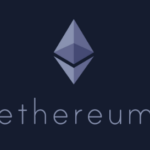Challenges and opportunities within Ethereum after Pectra upgrade

Ethereum’s upcoming Pectra upgrade is poised to revolutionize the platform, offering account abstraction for improved wallet management and user experience. This enhancement could potentially attract a wave of new users and investors to the Ethereum ecosystem. The market dynamics surrounding Ethereum are continuously evolving, with significant impacts beyond the realm of cryptocurrency.
Despite recent delays in upgrades, Ethereum remains a major player in the blockchain space. The Pectra upgrade is anticipated to enhance scalability and user experience within the Ethereum network. Industry insiders maintain confidence in Ethereum’s ability to adapt to global technology trends, underscoring its potential for continued growth and innovation.
The Pectra upgrade is crucial for Ethereum’s future trajectory, as it aims to address longstanding scalability and network performance issues. The introduction of flexible staking withdrawals and higher validator stake limits is expected to significantly improve Ethereum’s overall functionality. Additionally, the implementation of the Verkle tree data structure will bolster data handling capabilities and pave the way for future advancements in the platform.
Following the Dencon upgrade, Ethereum has witnessed a significant decline in network fees. While Layer 2 scaling solutions have increased transaction throughput, the economic benefits of these developments have yet to fully materialize for Ethereum. The network’s circulating price-to-fees valuation multiple has reached a four-year high, prompting questions about Ethereum’s value proposition in a competitive blockchain landscape.
Recent trends indicate a flight of capital from Ethereum ETFs in the U.S., signaling investor uncertainty surrounding the platform’s economic model. As Ethereum navigates these challenges, it must ensure that the value generated by the network is adequately captured by its native token to maintain its position in the market.
Blockchain technologies like Ethereum have driven increased demand for advanced memory solutions due to their memory-intensive processes. The global memory market is experiencing significant shifts, with prices of DRAM and NAND flash expected to fluctuate in the coming years. The adoption of blockchain technology continues to impact the memory market, with Ethereum’s transition to Proof-of-Stake reducing direct energy consumption.
Ethereum’s shift from Proof-of-Work to Proof-of-Stake has significantly reduced its energy usage, aligning with environmental sustainability practices. However, the infrastructure established for Ethereum mining remains relevant in the broader context of energy consumption in data centers. As the platform continues to evolve, sustainable practices in blockchain and other industries will play a pivotal role in shaping its future impact.
In light of broader technological trends, such as changes in the memory market and increased energy demands for data centers, Ethereum faces critical decisions regarding its long-term relevance and success. The success of the Pectra upgrade will depend on how effectively Ethereum navigates these challenges, potentially opening up new avenues for innovation within the network. As the landscape of blockchain technology continues to evolve, Ethereum’s ability to adapt and innovate will be crucial in maintaining its position as a leading platform in the industry.





